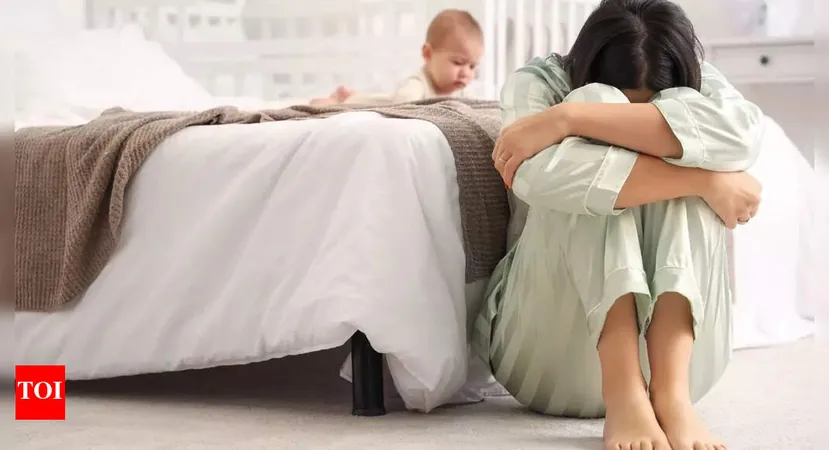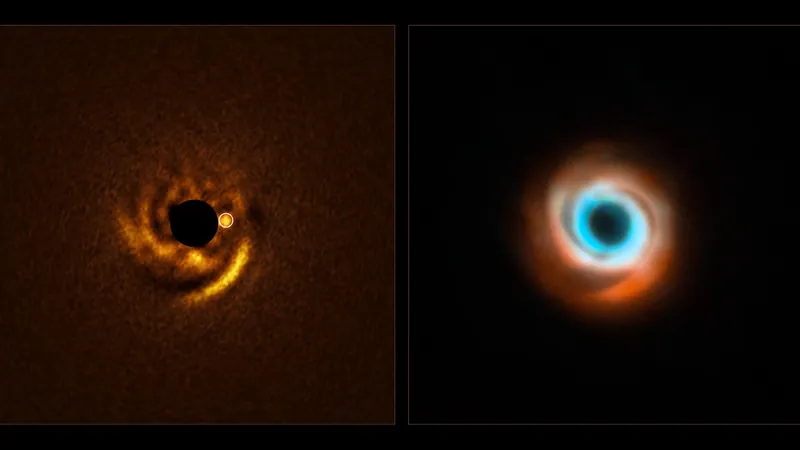
How Bubbling Bubbles Could Unveil the Hidden Dangers of Pollution and Disease Spread
2025-07-15
Author: Siti
Bubbles: More Than Just a Childhood Delight
We all love the mesmerizing sight of bubbles bursting, especially on a sunny day. But did you know that the moment a bubble pops actually plays a crucial role in the spread of pollutants, microplastics, and even infectious diseases? While scientists have long studied the physics of bubbles in pure substances, the effects that contaminants have on this process have largely remained a mystery.
Groundbreaking Research from Illinois
Researchers at The Grainger College of Engineering, University of Illinois Urbana-Champaign, are changing that narrative. Led by mechanical science and engineering professor Jie Feng, their study focuses on the aerosol droplets released when contaminated bubbles burst—shedding light on an overlooked aspect of environmental science.
Diving Deeper into the Mechanism of Bubble Bursting
Bubbles rise in fluids and often collect various contaminants like microplastics, surfactants, and microorganisms. When these bubbles burst at the air-water interface, they eject fine droplets that can carry pollutants and pathogens—an alarming reality for locations like wastewater treatment plants, where microbes are prevalent.
A Closer Look at Aerosol Dynamics
Feng's team created a model to investigate how contaminants influence the size of jet ejections upon bubble rupture. They observed that the characteristics of surface contaminants, such as oil viscosity and thickness, play significant roles in droplet size. By simulating contaminated bubbles through a specialized system, they gathered high-quality data to better understand this complex phenomenon.
Filling the Knowledge Gap
Zhengyu Yang, a graduate student and primary author of the study, pointed out that while prior studies typically focused on uncontaminated bubbles, their research addresses a critical gap. They introduced the "revised Ohnesorge number," a new parameter that incorporates contaminant effects into bubble dynamics.
Implications for Pollution Control and Health
The findings of this research are invaluable. They open avenues for improved understanding of how airborne contaminants are transmitted, especially in contaminated environments. Feng emphasizes the need for future studies on collective bubble bursting, as real-world scenarios often involve multiple bubbles interacting simultaneously.
Conclusion: A New Frontier in Environmental Science
The implications of this study extend beyond academic curiosity—they can inform cleanup efforts and environmental policies aimed at mitigating the effects of air pollution and disease spread. As we continue to explore the connections between bubble dynamics and contamination, we gain a clearer picture of how to protect public health and our ecosystems.



 Brasil (PT)
Brasil (PT)
 Canada (EN)
Canada (EN)
 Chile (ES)
Chile (ES)
 Česko (CS)
Česko (CS)
 대한민국 (KO)
대한민국 (KO)
 España (ES)
España (ES)
 France (FR)
France (FR)
 Hong Kong (EN)
Hong Kong (EN)
 Italia (IT)
Italia (IT)
 日本 (JA)
日本 (JA)
 Magyarország (HU)
Magyarország (HU)
 Norge (NO)
Norge (NO)
 Polska (PL)
Polska (PL)
 Schweiz (DE)
Schweiz (DE)
 Singapore (EN)
Singapore (EN)
 Sverige (SV)
Sverige (SV)
 Suomi (FI)
Suomi (FI)
 Türkiye (TR)
Türkiye (TR)
 الإمارات العربية المتحدة (AR)
الإمارات العربية المتحدة (AR)